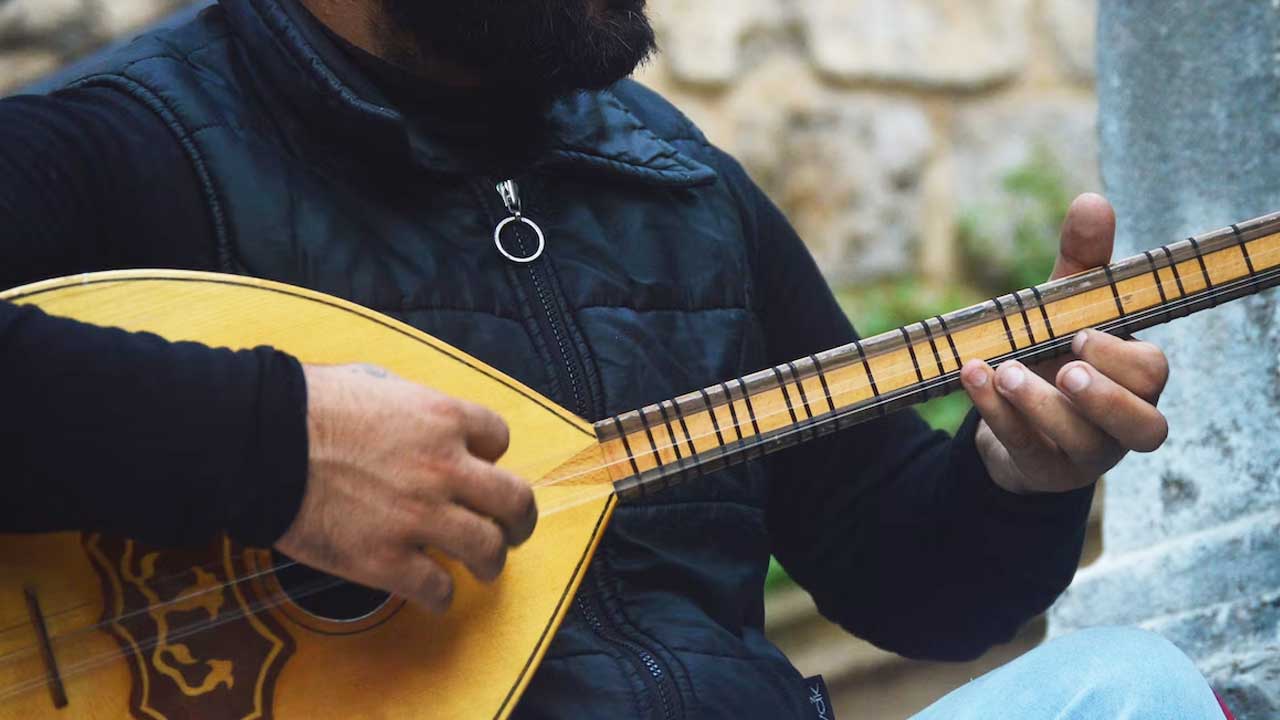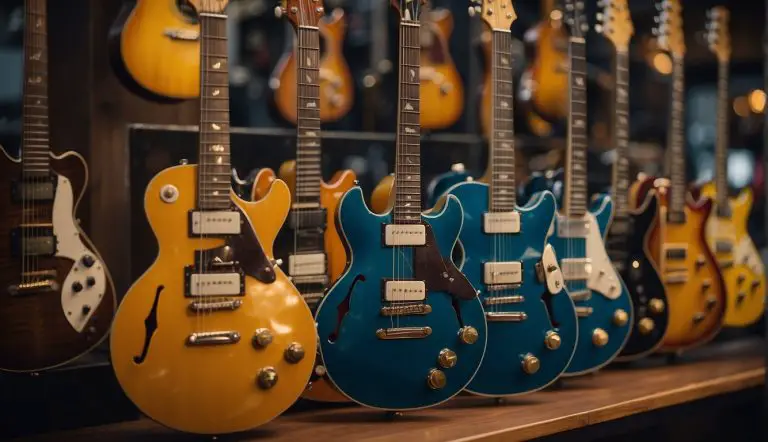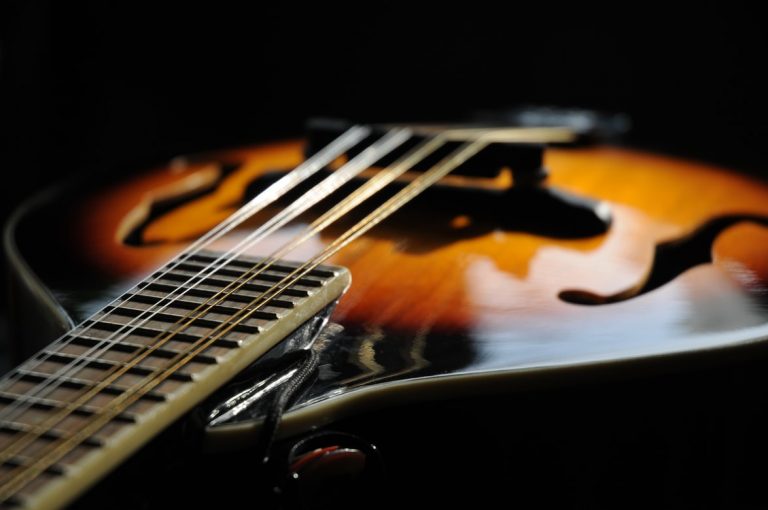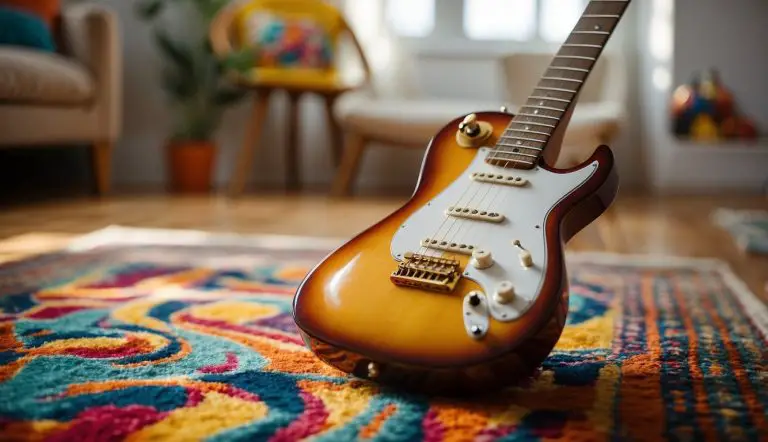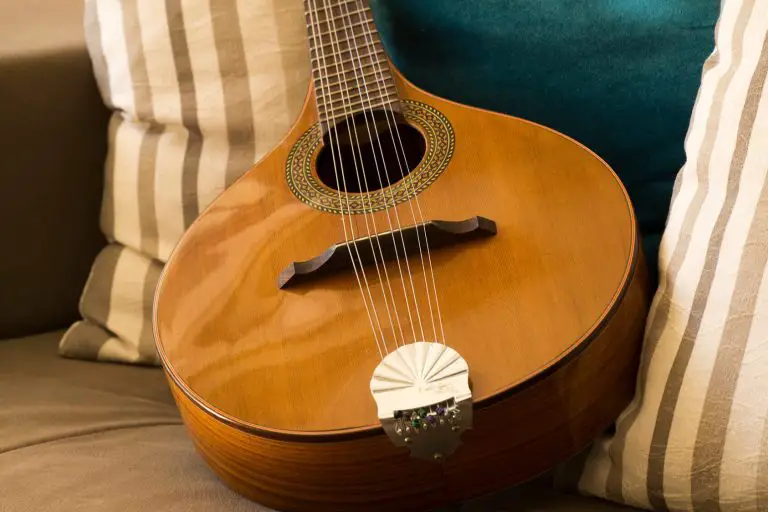How to Buy a Mandolin for a Beginner: Your Easy Step-by-Step Guide
Folkstrings.com is reader-supported. When you buy through links on our site, we may earn a small commission.
When I first considered buying a mandolin, I quickly realized that stepping into the world of this charming stringed instrument could be daunting.
With its distinct, lute-like shape and sweet, vibrant tone, the mandolin is an alluring instrument for music lovers seeking to broaden their musical horizons.
For beginners like me, it was essential to sift through a variety of factors, such as understanding the different types of mandolins and their specific features.

Determining the right mandolin for me required evaluating my budget while also considering the quality of materials and craftsmanship.
I had to decide between an acoustic mandolin, which is perfect for traditional styles, and an electric mandolin, geared towards modern music environments.
Furthermore, I learned that investing in the right accessories and understanding any necessary adjustments can significantly enhance the playing experience and ensure a comfortable fit for my musical endeavors.
Key Takeaways
- Choosing a mandolin as a beginner involves understanding various types and features.
- It’s important to select an instrument that resonates with both your budget and intended playstyle.
- Ensuring proper setup and investing in the right accessories can enrich the playing experience.
Table of Contents
What Are The Different Mandolin Types?
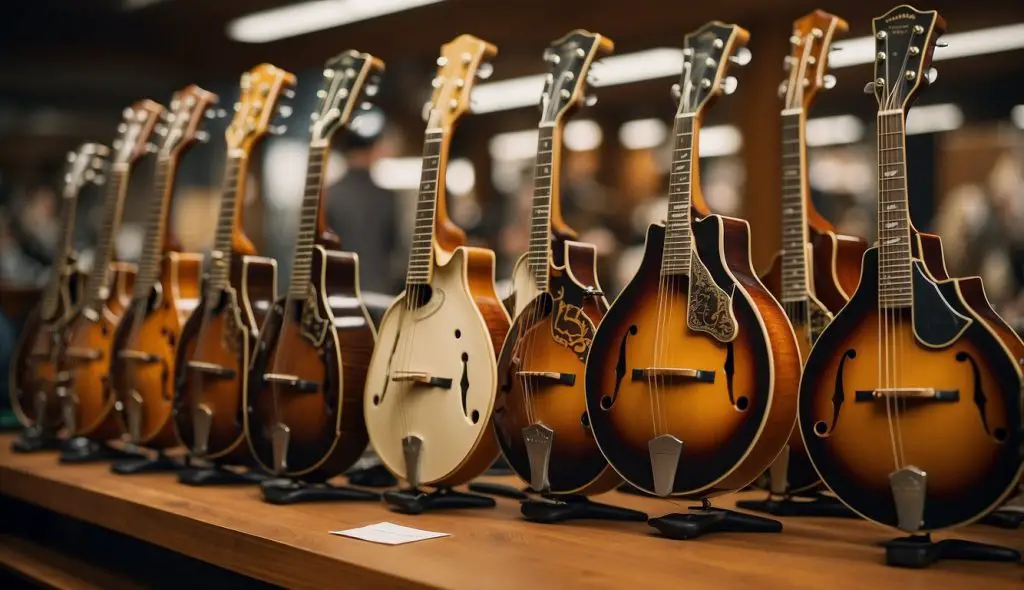
When I started exploring the world of mandolins, the variety was initially overwhelming. But I quickly learned that the body style of the mandolin not only affects its aesthetic appeal but also its sound and playability, which are critical for beginners to understand.
A-Style vs F-Style
The A-style mandolin is characterized by its pear-like shape, which is more common and generally less expensive than its counterpart. I recommend this type for beginners due to its comfortable shape and ample sound quality for most music styles.
On the other hand, the F-style mandolin, with its more elaborate, curvy body and a pronounced scroll near the neck, is often favored by bluegrass mandolin players. The F-style mando is known for its powerful, punchy sound and is typically priced higher due to its complex design.
Other Mandolin Shapes
While A-style and F-style are the most common, there’s another notable type — the bowl-backed mandolin. This traditional instrument, which harks back to European classical music, features a rounded back resembling a bowl. Its tone is quite distinct from the A- and F-styles, often described as mellow and warm, making it suitable for classical and folk music genres.
Remember, the choice between an A-style mandolin and an F-style mandolin can also be influenced by aesthetic preferences and the type of music you aspire to play. As for other shapes like the bowl-backed, they offer a unique sound that might just capture the essence of the music you love.
Recommended Beginner Mandolins
When selecting your first mandolin, I recommend focusing on the quality of construction, playability, and affordability. Many reputable brands offer models tailored for beginners that balance cost with a reliable playing experience.
Mandolin Brands and Models
Kentucky KM-150
The Kentucky KM-150 is an excellent choice for beginners. It boasts a solid maple neck and a rosewood fingerboard, enhancing playability and comfort. Its A-style body is common among folk and bluegrass musicians, and the sound quality is strong and clear.
Ibanez M510
Another fantastic beginner option is the Ibanez M510. It comes in a beautiful sunburst finish and offers dependable construction at an affordable price. The M510DVS model, in particular, has a warm tone associated with its mahogany neck.
Rogue RM-100A A-Style Mandolin
For those on a tight budget, the Rogue RM-100 offers great value. It has the look of a classic mandolin with a satin brown burst finish and is surprisingly robust. Granted, the sound may not be on par with higher-end models, but it’s a superb starting point.
Kentucky KM-272 Artist A-Style Mandolin
If you want a step up within the entry-level range, look at the Kentucky KM-272. The cedar top lends a richer sound, and the overall craftsmanship is superb for those who may be serious about continuing their mandolin journey.
Hola! Music A-Style Mandolin
Hola! Music offers affordable A-style mandolins ideal for beginners. Their models have a balanced tone suitable for new mandolin players, and the instrument comes with other essential accessories, which is quite handy.
Donner
Donner is known for making accessible instruments for beginners. Their A-style mandolins feature a rosewood fingerboard and a rich, inviting sound that can motivate any newbie mandolin enthusiast.
Choosing the Right Mandolin for Your Budget
When I set out to buy my first mandolin, I knew my budget was a key factor to consider. Finding the best mandolin for beginners doesn’t have to break the bank. With an array of options at various price points, I managed to navigate the market to find a budget mandolin that was right for me.
Set a Price Range: It’s important to determine how much I can comfortably spend before shopping. This helps narrow down my search to affordable mandolins. Here’s what I found regarding price ranges:
- Under $100: Mostly basic models, good for an absolute beginner who just wants to try out the instrument.
- $100 – $300: A mix of quality and affordability, often the sweet spot for beginners.
- $300+: Higher-end models that can still be suitable for beginners who are serious about learning.
Features to Consider: I learned that even within my budget, I had to watch for features like wood type, craftsmanship, and sound quality. Higher price doesn’t always mean better playability, especially for novices.
- Laminate vs Solid Wood: Laminate is more affordable and durable but doesn’t resonate sound as well as solid wood.
- Craftsmanship: I made sure the mandolin felt comfortable in my hands and the strings weren’t too high off the fretboard.
By being thoughtful about my purchase and comparing various models within my budget, I was able to find an affordable mandolin that didn’t compromise on quality. Remember, the best mandolin is one that feels right in your hands and suits your finances.
Materials and Build Quality
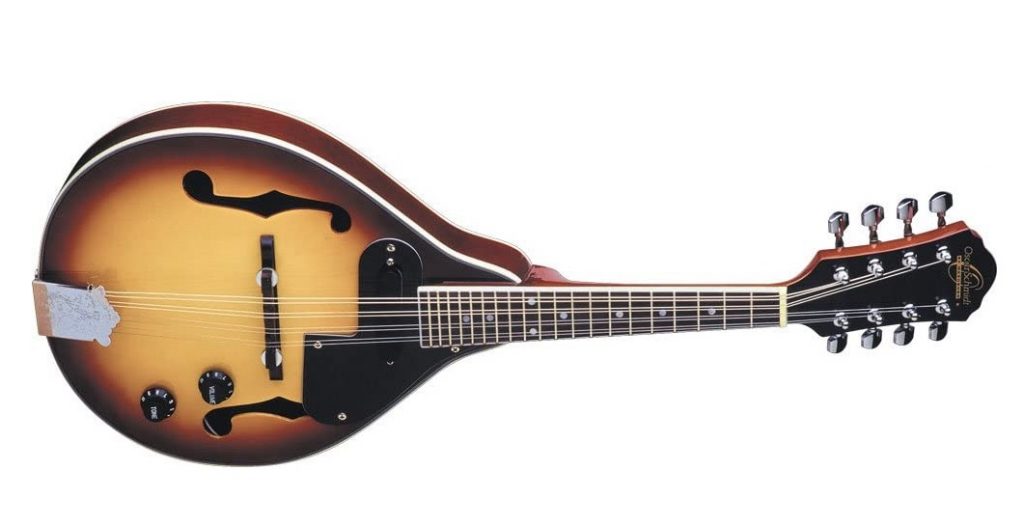
When I’m looking into buying a mandolin, I pay special attention to the materials and build quality, as these factors significantly affect the sound, durability, and playability of the instrument.
Wood Types
Wood is at the heart of every mandolin’s tone and resonance. A solid spruce top is renowned for its clarity and volume, making it a popular choice for beginners and professionals alike.
I find that mahogany back and sides offer a warm, rich tone, whereas maple tends to yield a brighter, more punchy sound. For a more affordable option without sacrificing too much quality, a laminate could work well, though solid woods like alpine maple and rosewood are top choices for their superior sound.
Body and Neck Construction
In terms of construction, a solid wood mandolin typically produces a richer sound with more volume than its laminate counterpart.
I always check if the top is hand-carved or not, as this suggests meticulous craftsmanship, especially when it’s a solid spruce top.
The mandolin’s shape and the neck construction, often made from maple or mahogany, are pivotal for playing comfort and stability.
Speaking from experience, a well-built neck supports the tension of the strings and maintains proper alignment, crucial for a beginner’s learning experience.
I always scrutinize the mandolin for indications of quality, such as a neck that’s securely attached to the body and a finely finished surface.
Remember, the better the materials and build, the more rewarding your journey with the mandolin will be.
Acoustic & Electric Mandolin Features
When I guide friends on choosing a mandolin, I emphasize the importance of distinguishing between acoustic and electric variants, as they greatly influence the sound and playing style.
Sound and Tone
The sound of an acoustic mandolin is typically warm and bright, with a woody resonance. Here’s what I tell my friends:
- Acoustic mandolins are all about natural sound quality; the wood and construction affect the volume and tone.
- The resonance and brightness of the instrument are paramount, giving that classic mandolin sound we’re used to hearing in bluegrass and folk music.
Electric Mandolin Considerations
An electric mandolin, on the other hand, is a different beast:
- It’s crucial to note that the sound can be amplified and adjusted, which is great for louder or more eclectic genres.
- Unlike acoustic mandolins, electric mandolins often have a more muted acoustic sound but offer the versatility to modify volume and tone through an amplifier.
Accessories & Adjustments
When I began playing the mandolin, I realized that having the right accessories and proper adjustments made a significant difference in both comfort and sound quality. Let me walk you through the essentials every beginner should consider.
Must-Have Accessories
Strap: A comfortable strap is crucial for maintaining a proper hold on my mandolin, especially during long practice sessions. I always ensure it’s adjustable to fit my posture and playing position.
Picks: I’ve found that having a selection of picks helps me with precision and tone. It’s good to experiment with different thicknesses to see what suits my playing style best.
Gig Bag: A padded gig bag is indispensable for protecting my mandolin when I’m on the move. It keeps my instrument safe from knocks and scratches.
Mandolin Strings: I recommend investing in a quality set of mandolin strings, like D’Addario strings, to get the best sound. They’re durable and reliable, which is necessary when I’m practicing often.
- Strap: Stability and comfort for playing
- Picks: Essential for tone and precision
- Gig Bag: Protection for my mandolin
- Mandolin Strings: Quality sound and durability
Setting Up Your Mandolin
Tuning: Proper tuning is essential, and I use Grover tuners for precision. They’re smooth and maintain the tuning well, which keeps my mandolin sounding great.
Bridge: Adjusting the bridge ensures that the strings are at the right height for me. An adjustable rosewood bridge is a great choice for its sound quality and ease of adjustment.
Truss Rod: I check the truss rod to make sure the neck is straight and adjust it if necessary. It’s key to having my mandolin play comfortably and sound its best.
- Tuning: Grover tuners for accurate tuning
- Bridge: Adjustable rosewood bridge for string height
- Truss Rod: Neck alignment for optimal playability
Frequently Asked Questions
When I started on the mandolin, I found it helpful to have some key questions answered. Here are some of the common questions beginners might have when selecting their first mandolin.
What factors should a beginner consider when selecting a mandolin?
It’s important for me to consider the type of music I want to play, my budget, and the mandolin’s build quality. The instrument should feel comfortable in my hands and have a pleasing sound to my ears.
What are some recommended mandolin models for novices?
For novices, brands like Rogue and Kentucky offer models such as the Rogue RM-100A and Kentucky KM-150, which are highly regarded as affordable and reliable options for beginners.
Where can one find affordable mandolins suitable for beginners?
I can often find affordable mandolins suitable for beginners at local music stores, online marketplaces like Amazon, eBay, or specialized music instrument websites. It’s also worth checking out second-hand options for a good deal.
How do mandolin types differ and which is best for a new player?
The two main types of mandolins are the A-style and F-style. The A-style mandolin is generally more straightforward and cost-effective, which I find to be a great starting point for new players.
What should beginners know about mandolin setup and maintenance?
I should familiarize myself with the basics of mandolin setup, which includes bridge adjustment and string changing, and ensure regular maintenance like keeping it clean and storing it properly to avoid damage.
From where can I purchase beginner mandolin instruction materials?
Beginner mandolin instruction materials are available at music stores, bookstores, or online platforms such as Amazon. eBooks and online courses can also be found on websites like Mandolin For Dummies. These resources are excellent for starting off on the right foot.
Author Profile
-
Daniel Johnstone is an English writer with a love for stringed instruments from around the world.
He shares his love for these instruments through his writing for folkstrings.com, a website dedicated to all things related to folk string music.
Daniel's passion for music started at a young age, and he has since become an accomplished musician, playing guitar, cavaco, and recently, the harp.
His dedication to learning and sharing his knowledge of stringed instruments is evident in his insightful and engaging blog posts. Whether you're a seasoned musician or a beginner, Daniel's writing is sure to inspire and entertain you.
When he's not playing music or writing, you can find Daniel exploring new instruments and seeking out new sounds to share with his readers.
Latest entries
 AutoharpApril 4, 2024What Is the Autoharp Made Of: Exploring Its Materials and Craftsmanship
AutoharpApril 4, 2024What Is the Autoharp Made Of: Exploring Its Materials and Craftsmanship AutoharpApril 4, 2024Is Autoharp Easy to Play? Unveiling the Truth for Beginners
AutoharpApril 4, 2024Is Autoharp Easy to Play? Unveiling the Truth for Beginners AutoharpApril 4, 2024What Is an Autoharp Worth? Your Guide to Pricing and Value
AutoharpApril 4, 2024What Is an Autoharp Worth? Your Guide to Pricing and Value AutoharpApril 4, 2024Are Autoharp and Zither the Same Thing? Unraveling String Instrument Myths
AutoharpApril 4, 2024Are Autoharp and Zither the Same Thing? Unraveling String Instrument Myths
Affiliates:
This post may contain affiliate links that at no additional cost to you, the site may earn a small commission. We only recommend products we would use ourselves and all opinions expressed on this site are our own.
Accuracy Advice:
While we strive to provide up-to-date and accurate information, the content in this article may not reflect the most current research or medical guidelines. We encourage readers to do further research and consult with professionals for more personalized advice.
Our Recommendations:
The products and services mentioned in any of our articles are recommended based on our independent research and personal experience. We are not sponsored by any company. We aim to suggest products and services we believe are of high quality and could be beneficial to our readers.

